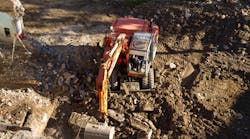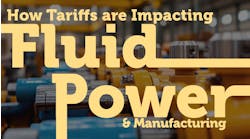How to KNOW Your Hydraulic Machine's Life Cycle Cost In Advance
Content has been updated as of Oct. 25, 2021.
The best time to determine the maintenance and reliability objectives for a piece of hydraulic equipment, and by extension, its life of ownership cost, is before it is purchased. And there are a couple of different ways this objective can be achieved.
Hydraulic equipment users who are sophisticated in their maintenance practices can dictate specific requirements for those variables known to influence service life, reliability and ongoing maintenance costs. For example, contamination control targets can be clearly defined in advance, and the machine manufacturer required to deliver the machine equipped with appropriate filtration and/or exclusion devices to achieve these targets.
Similarly, based on the type, weight and viscosity index of the hydraulic oil that will be used, the minimum viscosity and therefore the maximum temperature the machine is to operate at can be specified. And the machine manufacturer is then required to deliver the machine equipped with the necessary cooling capacity - based on the expected ambient temperatures at the machine's operating location.
Done thoroughly, the list of these prerequisites the machine supplier is required to meet becomes necessarily long. And while this exercise can remove much of the post-purchase maintenance and reliability risk for the machine owner, it does not eliminate it completely. Because there will always be unknowns about a machine that even a sophisticated hydraulic equipment user cannot anticipate in advance.
For this reason, the easier and therefore more popular way to determine life of ownership cost in advance is to put the responsibility back on the machine manufacturer. For example, the major car makers require binding information from prospective suppliers about the life of ownership cost over 10 years for machine tools and up to 30 years for presses! Investment decisions are then made based on the upfront capital cost plus the life cycle cost information provided by the machine supplier.
A variation on this theme is 'power by the hour' deals which have become popular in the mining business. Like the big car makers, the big miners buy a hydraulic excavator based on initial capital cost plus an agreed amount per operating hour, with agreed machine availability (uptime). This means if a main pump only lasts 1,000 hours instead of 10,000 hours, it's the machine manufacturer's problem, not the mining company's.
By doing this, the miners, who are not renowned for their maintenance best-practices, cleverly subrogate their maintenance risk to the machine manufacturer, and at the same time, have defined and capped their life of machine ownership cost with binding agreements. A great way to incentivize reliability improvement from the equipment manufacturer too!
Bottom line: purchasing a hydraulic machine on initial capital outlay alone, without considering the machine's life of ownership cost can be a very costly mistake in the long run. And to discover six other costly mistakes you want to be sure to avoid with your hydraulic equipment, get "Six Costly Mistakes Most Hydraulics Users Make... And How You Can Avoid Them!" available for FREE download here.

